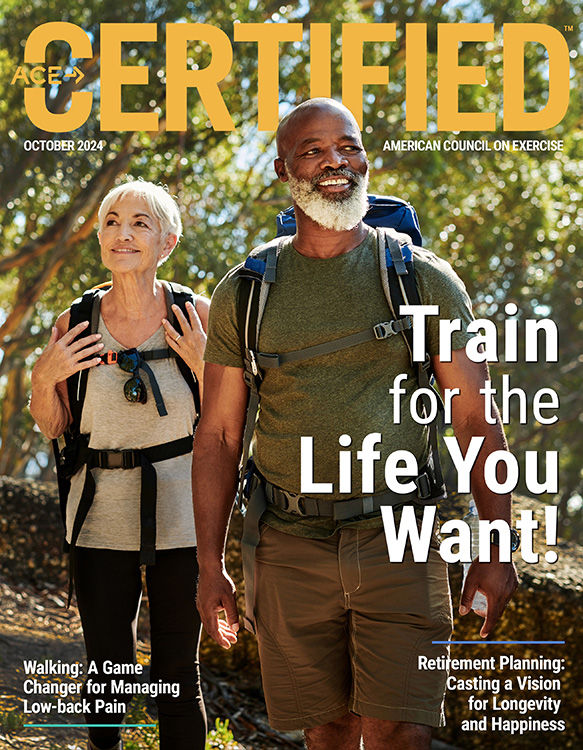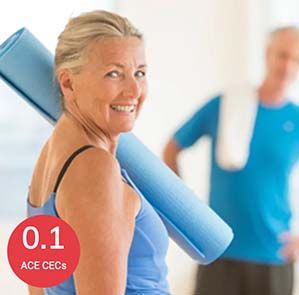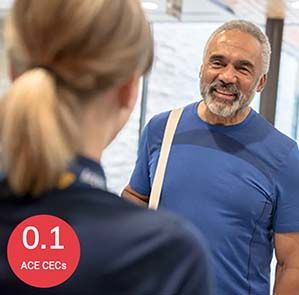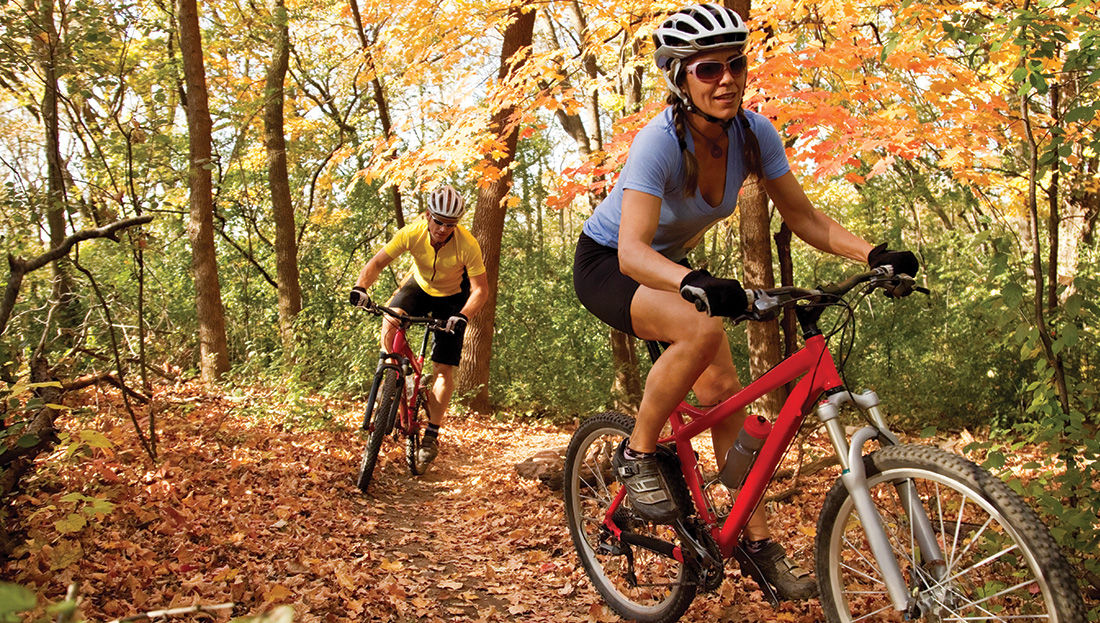
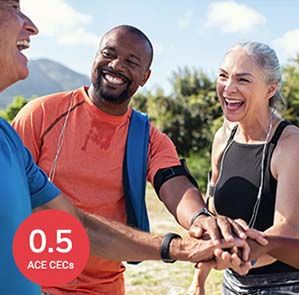
In today’s fast-paced, technology-driven world, achieving lasting health and wellness is more critical than ever. The Achieving Longevity Through Movement course offers innovative, practical solutions to help individuals embrace sustainable health habits. From holistic yoga to advanced recovery techniques, you'll gain the skills needed to enhance your own practice and make a lasting impact on your clients' lives. Whether you're a fitness professional, enthusiast, or passionate about wellness, this course is designed for you. Explore the latest trends and techniques through five dynamic sessions led by top industry experts and elevate your approach to wellness and longevity.
Consider these statistics: About 70% of Americans contribute to a 401K-type retirement plan. If you’re part of that 70%, do you remember how that idea was sold to you when you were first entering the job market, when the idea of sacrificing even a penny of your earnings seemed absurd? Defer a small percentage of your paycheck—maybe 6 or 8%—to be taken out before taxes and you won’t even notice the difference after a few weeks. You’ll simply grow accustomed to living on what remains.
Meanwhile, only about 24% of Americans meet Physical Activity Guidelines for both aerobic and muscle-strengthening activities.
So, while most of us have bought into a long-term vision that requires a financial sacrifice now in order to have a lifestyle we want later, a much smaller number of us are willing to sacrifice the time and energy required now to be healthy enough to enjoy that future life.
Why is that? Why are we able to understand that we’ll need money later on, but not health and fitness? Why can we see that we need to save in order to travel after retirement, but not that we’ll need to be mobile and fit enough to enjoy those trips? Why do we know that we’ll need to save money to retire and move to live near our grandkids, but not that we’ll need to maintain the strength to lift them up or the function to get up and down from the floor to play?
The guidance that health coaches and exercise professionals like you give your clients—particularly those in the precontemplation and contemplation stages of change—is deceptively simple. Move more. Eat better. Manage your stress. Get more sleep. And so on. Unfortunately, it’s exceedingly difficult for most people to make the lasting lifestyle changes necessary to positively impact their health and overall wellness.
Perhaps it’s time to find a new way to frame this conversation. It turns out the world of financial planning may offer some insight.
The Power of Vision
Sean Foy, MA, Founder/President of Personal Wellness Corporation and creator of Mindful Movement: Coaching Clients to Become More Active, says that the fitness industry may have a lot to learn from financial planners, who do a wonderful job of what he calls “casting vision,” which involves imagining a future where your financial goals are met and you’re living the life you want to live as you grow older. They don’t talk too much about the risks of not having money, but rather the joy that comes with being financially independent and able to enjoy your future life, whatever that means to you.
In other words, they ask clients to imagine their ideal retirement. Where do you live? Who are you with? What are you doing with your free time? What are your daily needs? The next step is to build a plan, starting today, that will make that vision a reality.
But let’s not get ahead of ourselves.
Step 1 is casting that vision; planning comes later. As a health and exercise professional, you know how to plan—to build periodized exercise regimens or lifestyle-change programs—but you may miss that first step of helping clients imagine the future in a positive, fun way that inspires them to work toward that ideal future self.
Instead, as an industry we often talk about the negative effects of sedentary behavior, the consequences of not living a healthy lifestyle or the damage that eating an unhealthy diet or not managing stress can do. We know that fear is not a particularly effective motivator for long-term change. That is, trying to convince a client to exercise because it will help them avoid type 2 diabetes or cardiovascular issues down the road is unlikely to work. But, perhaps taking a cue from financial planners by turning that notion on its head and casting a positive vision of where health and fitness can take your clients will yield better results.
“A question that I often ask clients,” Foy says, “is, imagine yourself as healthy and as fit and as strong as you could possibly be. What do you look like? What do you feel like and what is different about you?” He’ll continue that conversation by asking, “What do you see when you look at that future self? What are you able to do?”
This type of questioning allows you to connect with clients on a deeper level. By asking clients what they would do if they had the energy and ability to do anything, you’re uncovering their dreams.
Instead of focusing on avoiding disease or overcoming risk factors, for example, you’re asking clients to focus on their strengths, values and, ultimately, their purpose in life. And who doesn’t like to daydream about an ideal future?
Importantly, that conversation can yield an “a-ha moment” for a lot of clients if they realize that they may be heading down a road that is not going to lead to that idealized future. Saying you want to spend your retirement going on Caribbean cruises but not staying active enough to maintain the mobility and stamina to walk those white sandy beaches is like saying you want to retire at 65 while building up credit card debt in your 40s. The realization of that misalignment between current behaviors and future goals can be eye opening.
What Can You Defer?
A great question to ask clients is, “What are you willing to defer now in order to be healthy and fit as you grow older?” This is analogous to that 6 or 8% of your paycheck that gets taken out before it hits your checking account. What small change can a client make in their daily schedule that will become such an integrated element of their lifestyle that it becomes almost unnoticeable over time?
The answer may be different for each of your clients. For some, it may be a 30-minute walk at lunchtime or 15-minute walks before breakfast and after dinner each weekday. For others, it may involve movement snacks throughout the day or habit stacks that help them build a healthy daily routine. And for some, it may be a structured cardio and strength-training program that is built into their weekly schedule.
No matter what form it takes, the ultimate goal is to help clients make movement and other lifestyle changes a seamless part of their day—a small contribution to their “health savings account” that will build up over time and set themselves up to enjoy a happy and healthy lifestyle as they get older.
And, as Foy points out, seeing their investments pay off as they lose weight, as those morning walks become easier or as they’re able to lift heavier weights, can be tremendously motivational, just like seeing your financial profile improve over time. “They’ve moved the needle,” he says, “so now the hope grows.”
Once you and your client determine what they can defer—that is, how much of their daily paycheck of time and energy they’re able to withdraw—it’s time to figure out how to make the most of those investments. For example, if a client has 60 minutes per day to invest, should they lift weights and meditate, go for a walk and shop for healthy groceries, meet friends for coffee and do some gratitude journaling?
In truth, a healthy lifestyle requires a combination of those things, so a plan is needed to map out the best approach over the course of the week. That might involve lifting weights on Tuesday and Thursday, meeting friends for coffee on Saturday mornings, journaling for 10 minutes each evening and so on. The important thing is to have a plan that aligns with the client’s values, abilities and needs, while also developing the awareness of how this new lifestyle is going to help them both now and in the future.
Make the Right Investments
Every client is different and will have distinct needs now and into the future. That said, there are some categories of overall wellness on which you can focus your efforts when working with clients who are casting a vision of their future. As Mychele Sims, a Pilates and dance exercise instructor and owner of Get2Werk Fitness, says, “if we’re thinking about a money mindset or a body mindset, we’re thinking about how we’re making sure we can deal with all of the challenges life gives us.”
Sims says clients should be doing weight-bearing but lower-impact exercise and focusing on activities of daily living and the five primary movement patterns: pushing, pulling, single-leg, bend-and-lift and rotation. In many ways, she says, the ability to do those movements is going to define your quality of life as you age.
Ky Russell, MA, is a certified Pilates instructor, educator and mindfulness facilitator and leads an ACE webinar entitled Embodied Stress Release. She likes to remind clients that there are multiple reasons for doing any exercise and that a lot of the elements of physical fitness that decline with age—agility, balance, flexibility and strength—can be trained for.
For example, she says, a client may be doing a workout to build strength for a big hike or to improve performance in their chosen sport, but she tells clients, “You’re also doing it so you can get off the toilet when you’re 90, or reach the top shelf or wash your own hair.” Young clients are often taken aback by that approach, but they soon recognize the importance of what Russell is communicating. She calls it “cross-training for life.”
When it comes to stress-management strategies, Russell says movement should be at the top of that list. “If somebody is doing a workout, then for the next 24 hours,” she explains, “if they encounter a stressor, they actually might react to it a little less and their stress response won’t be as intense.”
An Insurance Policy Against Stress
Developing stress-management skills is like having an insurance policy that will protect you at all stages of life. Russell also points out that every workout, every healthy meal and every positive lifestyle choice is like a contribution to your savings account, meaning that you’re building up a reserve for those inevitable times in life when your wellness routine has to be moved to the back burner.
Other effective contributors to that stress-management savings account include mindfulness meditation and breathwork. “It’s not so much that a single bout of meditation is going to relieve stress,” Russell explains, “but having a meditative practice over the long term helps us be more aware and able to deal with whatever we’re facing in the present moment.”
Breathwork can also be an effective coping mechanism during moments of high stress, so developing that skill can be vital to overall wellness. One good strategy is to incorporate mindfulness and breathwork during sessions or classes.
Russell also points out that not dealing with stress in your 30s or 40s is linked to a lot of serious diseases that can arise later on. “There are so many different kinds of comorbidities that go along with excess stress,” she says. This includes some obvious ones like heart disease, but also others you may not be as aware of, like a rougher transition through menopause and an increased risk of dementia.
By managing stress early in life, Russell says, “you’re building up the savings account, but in doing so, you’re also preventing potentially a lot of problems that would deplete the bank account.” It’s like you’re simultaneously saving more and spending less.
Don’t Forget the Social Component
One more component of a healthy lifestyle is social connectedness, which is also a vital component of healthy aging. Socializing before, during and after workouts—as well as during those Saturday morning coffee meetups. Feeling like you’re part of a vibrant, supportive community is important at any age, so building and maintaining those connections throughout life is important.
Sims echoes this idea, saying that clients should be asking the following questions when looking into that crystal ball at their future: “How am I interacting with my friends and family? And if I have children or nieces, nephews, grandchildren, how am I showing up for them?”
It’s about not only living your best life, but also being your best self.
Foy summarizes much of this using the acronym RISE:

Final Thoughts
There is a quantifiable and qualitative value to money that doesn’t really exist with lifestyle change, but it’s essential to help clients recognize that building energy (as well as equity) and being physically (as well as fiscally) responsible can lead to happy and healthy golden years.
As Russell explains, with both fitness and finance, you’re never done. Even in our senior years, most of us will be living on a budget and managing our money. And, it’s not as though your clients will someday reach optimal health and wellness and be finished. This is an ongoing process, but helping clients recognize that healthy behaviors, like money saved, yields compounding interest can be enlightening.
Investments early yield benefits later, so sit down with each of your clients and say, “Let’s daydream for a few minutes….”
Expand Your Knowledge
ACE Health and Fitness Summit: Achieving Longevity Through Movement – Live Virtual Event!
Ready to transform your approach to health and fitness? Whether you’re a professional, enthusiast or wellness lover, this event is for you! In this live, one-day event you will discover cutting-edge trends and techniques as you dive into transformative learning with five dynamic live sessions led by some of the industry's most influential experts. You will elevate your knowledge, expand your network and ignite your passion for wellness and longevity.
Anti-aging Benefits of Exercise
What if you could give your clients over 40 the tools they need to maintain their youthful appearance and boost their energy levels? This webinar led by ACE Certified Professional Pete McCall, MS, CSCS, covers how strength and power training can help boost production of muscle-building hormones that many consider the fountain of youth. Learn how to apply the variables of exercise program design that create an anabolic response to exercise, and in the process, help your older clients discover their fountain of youth.
10 Ways to Support the Adherence of New and Returning Exercisers
With a focus on the critical need for inclusivity and understanding in fitness spaces, this course provides actionable insights on engaging clients effectively. Learn how behavior change theories can be applied to real-world scenarios to help clients overcome barriers to exercise. Discover techniques for building a supportive community that empowers new and returning exercisers to feel connected and motivated.





 by
by 